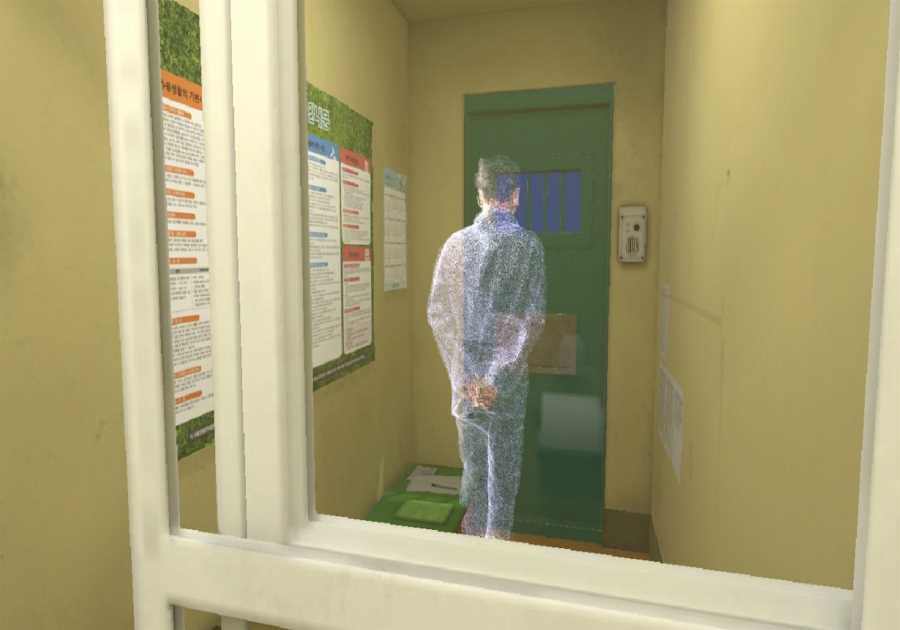Click here to support my Zen teaching practice at Patreon of which translations and writings like this are one facet. You will also find an advertisement free version of this post there too.
Meditation can have adverse effects.* Just look at the above image of Bodhidharma – does his face give you the impression that there’s nothing adverse going on here?
Now if you’ve practiced meditation in any form (with the possible exception of soaking-in-a-hot-tub zazen) for more than about ten minutes, you’ll know this is true. You will almost certainly have had some uncomfortable sensations of a psychological and/or physical nature pass through, if only an itch that you couldn’t scratch. This, in fact, is the first noble truth of the buddhadharma—the truth of itching, more commonly known as the truth of suffering. Meditation is a reality zone.
Yet, reading through a contemporary organization’s website on the topic, I get the impression that only now have they alone noticed that meditation can be a powerful practice and unless one is careful, it can cause (or be related to) adverse effects.
This is not new information. More on that below from one of classical sources, the great meditation master Zhiyi (538-597). But for now, just this teaser:
“One must know well the methods for employing the inward mind during sitting meditation to treat disorders. If someday one activates a disorder, it may not simply be a matter of developing an obstruction to practice of the Path. It may be that one hath to even contemplate the loss of this one great life.”
Wow!
Reminds me of the time when I was a new Zen priest and asked Katagiri Rōshi if it was okay for me to move during zazen. “It’s better that you die,” he said.
Intense Meditation Can Mess With You
So it is indeed true that intensive meditation practice (something more than an hour a day) is simply not appropriate for some folks. And doing intensive retreats (more than six hours or so of daily sitting meditation for a week or more) is likewise not appropriate for some. Granted, not so many people these days are doing such intensive practice.
Still, intensive practice can cause (or at least be related to) a range of intense symptoms, some of which can be long-lasting and can impair functioning. These may include dysphoria, paranoia, dissociation, delusions, and parasomnias. Therefore, if you are doing intensive practice or plan to do such, it is important how to know how to work with symptoms that can lead to adverse effects.
For other symptoms, check out the list of “59 categories of meditation-related experiences that can be distressing or associated with impairment in functioning” at Cheetah House. Meditation practice, after all, is a serious endeavor and in recent years some organizations like Cheetah House have worked to raise awareness about such things in what had been the one-sidedly glowing and naive world of secular mindfulness. Kudos to them for doing so. It’s as if a balanced view of the risks involved just wasn’t good for business.
While acknowledging the contributions groups like Cheetah House are making, in my view, it is also important to recognize that many of the 59 symptoms they list are completely normal, fleeting states of life, let alone of meditation practice. Some of those symptoms that might lead to adverse effects include irritability, positive affect, change in worldview, clarity, mental stillness, breathing changes, pain, and change in self-other or self-world boundaries. Many of the 59 symptoms look like they are pathologizing the fruits of the path and/or normal human experience while using quasi-scientific language to lend credibility (and scareiness) to their efforts. unfortunate.
I’ve personally experienced many of the 59 symptoms during intensive meditation retreats as well as daily practice and I only occasionally get locked in the Bodhidharma scowl.
The Importance of Being In Relationship with a Living Teacher
From what I’ve seen in my forty-five + years in the meditation realm, the incidence of the above and other symptoms at a level of intensity and duration that significantly impairments functioning is really quite low, although such things do occur. And because they do occur, if even infrequently, it is a bad idea for anyone who isn’t in a teacher-student relationship to engage in intensive meditation practice.
By that problematic little word “teacher,” in this context, I’m referring to someone who
- a) knows how to identify whether or not intensive meditation is appropriate for you and
- b) can help you make appropriate adjustments in the practice when indicated, including helping you avoid and deal with disorders that might arise due to intensive practice.
If you are looking for such a person, it is best to inquire directly about a prospective teacher’s training. To become this kind of “teacher,” it is necessary to have done your own intensive meditation practice for years and to have studied buddhadharma literature so that you have resources to help people beyond your own limited personal experiences. Don’t assume that the teacher at your local dharma shop is such a person. Many people are now authorized as teachers with little actual training. Check out their credentials. Ask questions.
In addition, for a student working with a teacher, it is necessary to be forthcoming about your mental and physical health history, what you are experiencing in your current practice, and to follow the teachers instructions (or if you change your mind about working with someone, find another teacher).
In my view, sometimes an adjustment is called for, but most often, experiences are just passing through and the important thing is to turn upstream into the perceptual field and illuminate the karmic consciousness that is creating the symptom. The symptoms when worked through skillfully, have the possibility to be the field of awakening.
Speaking of awakening, if one is determined to get to the root of this one great life, to realize great awakening, then, rest assured, there will be some difficulties, and probably some serious difficulties. Indeed, following major shifts in practice, many people are not so functional for a while. In our hyper-functional culture, this might sound horrifying, but in the received tradition, it’s just part of the landscape.
Indeed, it is because our functionality might not be at it’s peak for a while that the “sacred fetus period” of training came to be. After a definite awakening, a teacher might assign some years of quiet, hermit-like living, while the person deepens and clarifies their realization. In the past, this style of training was often recommended to people prior to their appearing in the world as teachers. Dōgen is one such teacher who did this practice, as is Wansong (see Going Through the Mystery’s One Hundred Questions, p. 17-18).
intention searching
In addition to finding a skilled teacher, given that difficulties, even serious adverse effects, may well arise in intensive training, it would be wise for students considering such to do some intention-searching and cost-benefit analysis. Some of the questions such a person might ask:
- Am I practicing meditation primarily so that I can be a more effective employee for a multinational corporation? If yes, it probably isn’t worth the risk.
- Am I practicing primarily so that I can be a better parent or partner? If your answer is yes, there may well be other approaches that would be more effective and have less risk, like psychotherapy, for example.
- Am I practicing primarily in order to be more relaxed and experience a sense of ease in my life? If yes, again, meditation practice may not be worth the risk, at least not at the level of intensity that’s necessary to show significant results. You might just get a regular massage.
- Am I practicing primarily to meet my Maslowian “needs for belonging” through association with nice, well-educated, middle class, progressives? If yes, again, probably not worth the risk. Consider joining the Unitarians or Quakers – they’re often much more experienced at community and have better social skills than your average Buddhists.
- Am I practicing to actualize nongaining mind, or as a faith-statement about useless zazen? If yes, quit now! You are very likely to experience either or both pleasant and adverse effects in zazen. In other words, you will almost certainly “get something” from your practice. If this is your intention, instead, you might devote your life to finding the one thing without outflows.
- Am I practicing primarily in order to awaken so that I can contribute to the profound liberation of some other (or all) living beings? If yes, then some risk may well be worth it. In this case, in my view, it makes sense to bust your ass in zazen and deal with the consequences – as long as you’re working with a skilled teacher.
In conclusion, some adverse effects may happen as a result of meditation practice. Clear intention and working with a competent teacher are the best ways to avoid and/or work with adverse effects when they occur.
__________________
From Zhiy’s The Essentials of Buddhist Meditation, pp. 59-60:
“What is meant by ‘making adjustments?’ Now, to draw upon familiar subjects as analogies for this dharma, it is just as when a common potter wishes to create various sorts of vessels. They must first skillfully make adjustments in the clay such that it is neither too stiff nor too soft. Afterwards they may move to the potter’s wheel. It is also like playing the lute. One should first make adjustments to the strings, properly setting their tension. Then one may proceed to play, producing all sorts of marvelous melodies. When the practitioner cultivates the mind, it is just the same. One must make skillful adjustments in five different matters (food, sleep, body, breath, mind) and must make those adjustments appropriately. Then samādhi will develop easily. If there is some factor which has not been properly adjusted, then there will be all sorts of obstructive difficulties and it will be hard for roots of goodness to develop.
And from Zhiyi’s The Essentials of Buddhist Meditation, p. 111:
“Now, as for the dharma of sitting in dhyāna absorption, if one is able to skillfully apply the mind, then the four hundred and four kinds of disorders will naturally be cured. If, however, one fails in the correct placement of the mind, then the four hundred and four kinds of disorders may arise on that very account. For these reasons, whether one is engaged in practice oneself, or whether one is teaching others, one must become skilled in recognizing the causes of disorders. One must know well the methods for employing the inward mind during sitting meditation to treat disorders. If someday one activates a disorder, it may not simply be a matter of developing an obstruction to practice of the Path. It may be that one hath to even contemplate the loss of this one great life.”
* Tetsugan Sensei contributed even more than usual to this essay.

Did you miss our previous article...
https://yogameditationdaily.com/meditation-retreats/the-wizard-of-old-louisville-devin-individual-is-using-magic-to-develop-a-community






